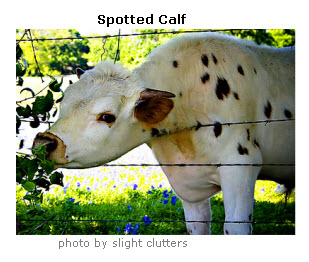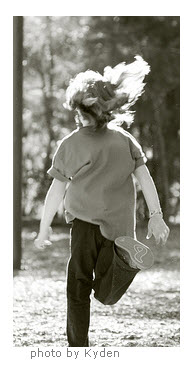 The scientific method must have originated with kids. I say this because they are naturally curious –naturally inquisitive –natural explorers. For example, at eight, my uncle told me that if I would run around our house three times two small spotted calves would be behind me. He swore it was true. His insistence that it would actually happen chipped away at my doubt. I did not believe him, but the idea was very exciting. I was determined to prove him wrong, but what if he was right? Running around the house three times was no big deal for an eight year old.
The scientific method must have originated with kids. I say this because they are naturally curious –naturally inquisitive –natural explorers. For example, at eight, my uncle told me that if I would run around our house three times two small spotted calves would be behind me. He swore it was true. His insistence that it would actually happen chipped away at my doubt. I did not believe him, but the idea was very exciting. I was determined to prove him wrong, but what if he was right? Running around the house three times was no big deal for an eight year old.
Let’s look at this event scientifically:
The scientific method is nothing more than a process for finding solutions to problems.
Problem: Would running around the house three times result in the presence of two spotted calves?
Next is some idea about the solution to the problem, which is called the hypothesis.
Hypothesis: I think my uncle is nuts. Running around the house three times will not result in two spotted calves being behind me.
 Now it is time to experiment. The experiment will test the hypothesis. In other words, the results of the experiment will prove or disprove the hypothesis. FYI: The results is only true for the conditions of the experiment.
Now it is time to experiment. The experiment will test the hypothesis. In other words, the results of the experiment will prove or disprove the hypothesis. FYI: The results is only true for the conditions of the experiment.
Experiment: Run around the house three times looking straight ahead. At the end of the third lap, I was to look behind me for the presence of two spotted calves.
When an experiment is performed, the information collected is called data.
Data: At the end of the third lap, two spotted calves were not behind me. But my uncle insisted that I was wrong. It was then that he pointed to the two calves on the back of my legs. He had tricked me–AGAIN.
After the data has been collected and analyzed, its now that a summary of the entire process be made. This is called the conclusion.
Conclusion: There are two meanings for the word calf–one is an animal and the other is part of my leg. My uncle tricked me, but I would be smarter next time, and I knew that there would be a next time.